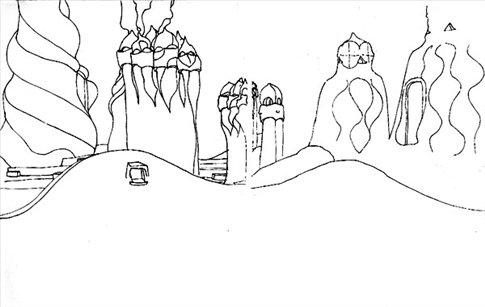
Barcelona has its share of tourists. Actually it has the
share of other cities as well, for the crowds that gather around the main Gaudi
monuments –La
Pedrera, the Familia Sagrada, Parc Güell – do so in
numbers that would seem more appropriate to airports in South-East Asia or the
central railway stations of large European cities. At 10am on any given day the
queues are 200 deep. You can only imagine how they might be mid summer. Of course the architecture is amazing. It is animate,
grotesque and organic in a way that somehow spans the gap between Art Noveau
and the paranoid excesses of H.R. Giger. On the façade of Casa
Batllo the balconies are stylised skulls, the roof tiled like a
dragon's skin in shades of blue and green.
But the tourists are everywhere, and so too the ever-present
remora of touts and souvenir stalls. So I walk south into the gothic
quarter with its narrow streets, paved alleyways, and tall, shuttered
buildings.
Just before the end of the quarter, two streets from the
wide corniche, is an alley lined with Chinese shops, local bars, and smelling
of urine. You follow it across La Rambla, with its circus performers and
acrobats, past houses with bricked-in
windows, rubbish and graffiti. On the street corners stand prostitutes in
absurd, pastel coloured clothing, their pimps keeping guard at close range.
Between the whores and hashish sellers are small
Pakistani grocers, travel agents advertising cheap flights to Lahore in Spanish
and Urdu, and a photocopy booth with signs in four languages.
Needless to say there are no tourists here, in the hustle
and drive of Drassanes. A quarter
noted only on the map for the Metro station of the same name, and Richard
Meier's MACBA
building, its white forms ascending cleanly into the blue sky.